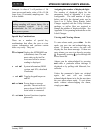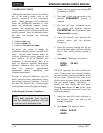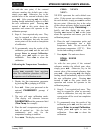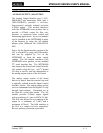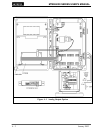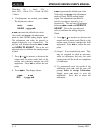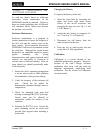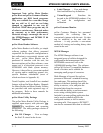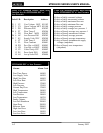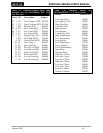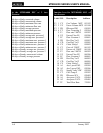
MTEK6000 SERIES USER'S MANUAL
January 2002 5 - 1
Chapter 5 : MAINTENANCE and
SOFTWARE PACKAGES
As with any device based on solid-state
electronics, actual maintenance of the
MTEK6000 should be minimal. However,
there are certain guidelines that, if followed,
will minimize device failure and increase
the product’s service life.
Enclosure Maintenance
Enclosure maintenance is a program of
routine inspections to insure the integrity of
the lid's seal and the various ports in the
box's exterior. Excess moisture can ruin an
MTEK6000 if allowed to accumulate within
the enclosure. Although the circuit boards
themselves are conformal coated to protect
against humidity, the wiring
interconnections and various exposed metal
surfaces are susceptible to corrosion in
extreme cases of interior humidity. Here are
some checks you should periodically make
of the enclosure:
1. Ensure the unit’s mounting arrangement
is secure and provides a stable platform
for termination of the pressure tubing.
2. Verify the integrity of the enclosure lid
seal. Check the lid gasket for
deterioration, chemical damage, tears, or
compression.
3. Check for damaged cord grips and
missing or damaged RS-232C port caps.
Liquid must not be allowed to
accumulate within the interior of the
enclosure.
4. Examine the RS-232C port. Ensure the
port's mounting screws are secure and
provide firm support when attaching a
serial cable.
Changing the Battery
To replace the battery in the unit:
1. Open the front door by loosening the
upper and lower right hand corner
screws of the device enclosure and
swinging the door out (see Fig 1-1 and
1-2 in Chapter 1).
2. Attach the new battery to connector J-6
or J-7 (see Fig. 2-1 in Chapter 2).
3. Disconnect the old battery from the
other connector in the unit.
4. Press any key to wake-up the unit and
verify that it is fully operational.
Calibration
Calibration is a crucial element of any
scheduled maintenance program. However,
because of the unit’s design, software
calibration does away with the need for
laborious adjustments, simplifying field
calibration. See the section on Calibration
for more details.



